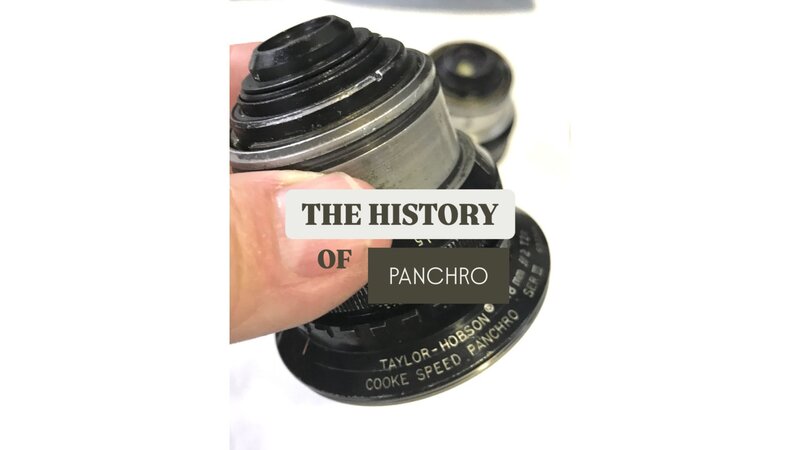The History of Panchro by Cooke: How Series II Speed Panchros Revolutionized Cinema Lenses 11/8/2024, 12:00:00 AM

The History of Panchro by Cooke: Series II Speed Panchros (S2s) and Thorium Dioxide
What if a small tweak in lens design could change the way we see movies forever? In the 1950s, Cooke’s Series II Speed Panchro lenses, or "S2s," did just that. These lenses didn’t just capture images; they transformed the quality, clarity, and scope of cinematic visuals, shaping what would become the standard for lenses in cinema.

The Birth of Series II Speed Panchros
Gordon Cook, a visionary lens designer at Taylor-Hobson, took on the task of redesigning the Speed Panchro line in 1948. By 1953, the first of the new Series II lenses, a 25mm T2.2, was released, followed by a complete range from 25mm to 100mm by 1958. With T-stops from T2.2 to T2.8, these lenses provided enhanced control over light and depth of field. Unlike their predecessors, the Series II lenses integrated rare-earth glasses and innovative coating techniques, reducing reflections and enhancing contrast. These advances allowed cinematographers to capture sharper and more vibrant images.
The Role of Thorium Dioxide in Lens Innovation
A key innovation in the S2 lenses was the addition of thorium dioxide. This element, when mixed with silica, created glass with a unique ability: it combined high refraction with low dispersion. For cinematographers, this meant reduced chromatic aberration, resulting in more accurate colors and sharper images, a massive improvement for lenses used in cinema.
However, thorium dioxide came with a side effect. The ionizing radiation in the glass created “color centers,” tiny spots that absorbed certain wavelengths of light. Over time, this led to a yellow-brown tint in the lenses, often compared to a tea stain. This discoloration was especially visible in the 75mm S2 lens, but despite the color cast, the performance benefits made these lenses invaluable to cinematographers.

The Shift from Hand Calculations to Computer-Aided Design
The S2s also marked a technological shift in lens design. Previously, the intricate optical calculations required for lens design were done entirely by hand, taking up to a year to perfect a single lens. With the advent of computers, however, these calculations could be completed in mere days. This breakthrough allowed Cooke to produce lenses with far greater precision and consistency, quickly establishing the Series II Speed Panchros as a staple in the film industry.
Expanding the Panchro Family: The Cooke Telepanchros
In 1959, the Cooke Telepanchros were introduced as a complement to the S2 series. This set included lenses ranging from 152mm to 558mm, with T-stops from T2.3 to T6.2. These longer focal lengths enabled cinematographers to capture distant scenes with unprecedented clarity and detail, further expanding the creative possibilities of cinema.
The Series II Speed Panchros and Telepanchros transformed the world of cinema, combining scientific innovation with unparalleled artistry to produce lenses that helped define an era in filmmaking.
Copyright © Cinelenses S.L 2025.





